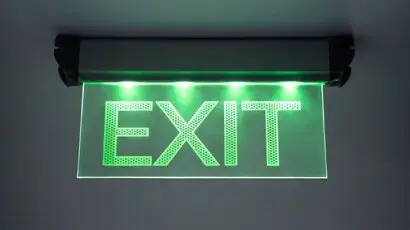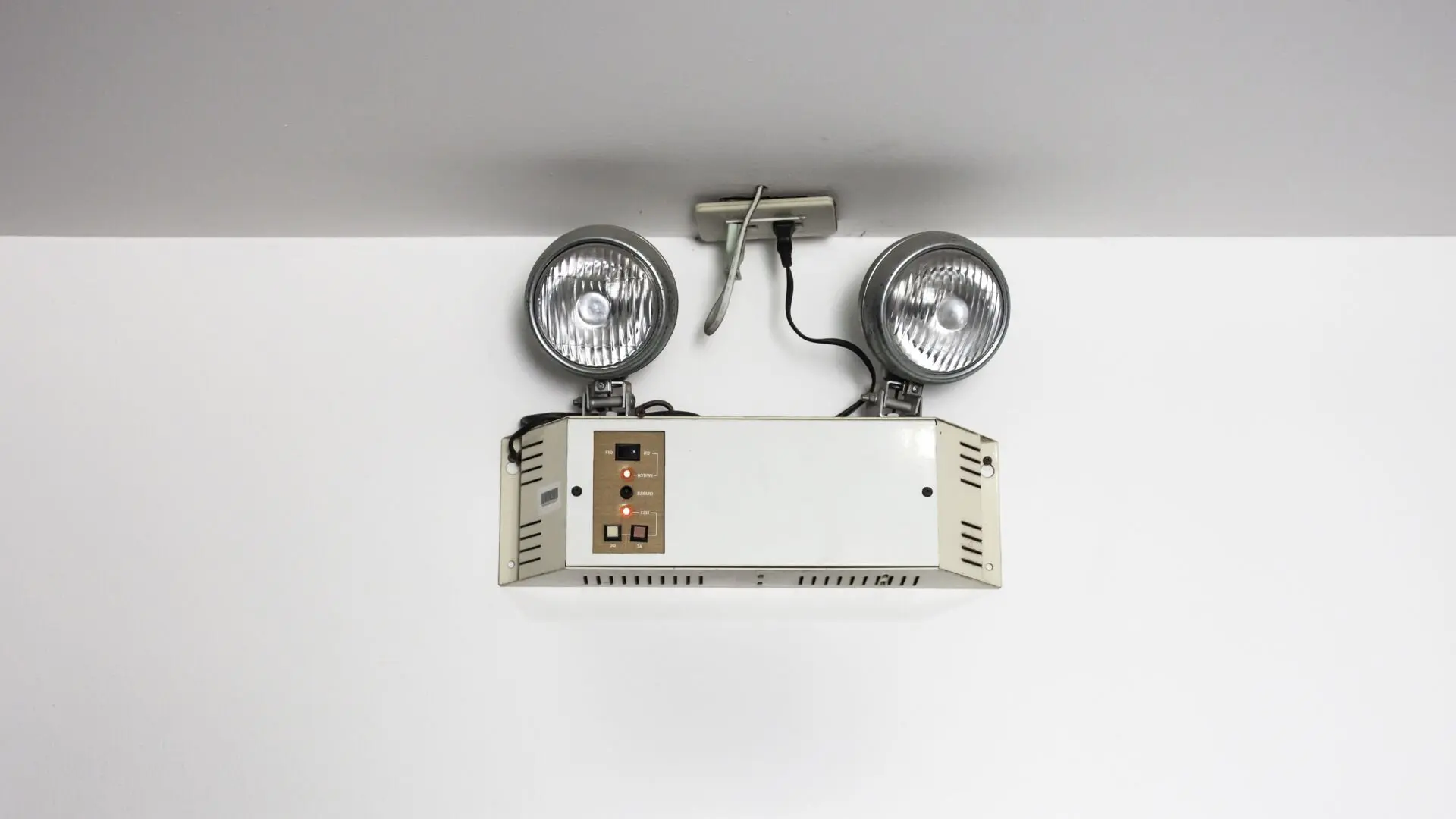
Get your free Melbourne Electrician quote today!
Our team of Melbourne Electricians is here to help you with any questions or concerns you may have. We’re committed to providing you with the best possible service and support.
Ensure your building adheres to safety regulations and safeguards occupants during emergencies. Learn how to choose the right exit and emergency lighting for your facility and keep your employees and customers safe.
A 2023 report by the Australian Institute for Disaster Resilience (AIDR) identifies inadequate emergency exit lighting as contributing to fire evacuation fatalities in Australia. During a fire, smoke and reduced visibility can cause panic and hinder safe escape. Here’s where emergency and exit lighting systems come in. These lighting systems illuminate escape routes, exit doors, and open areas, guiding building occupants towards safety during a power outage, fire, or other emergencies.
Sticking to the relevant Australian Standards is vital to keep these systems working properly. Government and commercial buildings need exit and emergency lighting that meets the National Construction Code (NCC). This code sets out the minimum requirements for these systems, covering everything from the types of light sources to their placement and testing procedures.
Understanding Exit and Emergency Lighting Requirements
In Australia, ensuring building safety means paying close attention to exit and emergency lighting. Exit signs, brightened by these lights, clearly indicate exit doors in emergencies. These systems, made up of emergency lights and signs, kick in when the power goes out or the usual lighting isn’t working.
Emergency lighting is vital as it allows people to exit through designated routes even in complete darkness. The Australian Standards and National Construction Code (NCC) outline what’s needed for exit and emergency lighting across different types of buildings, including commercial, multi-residential, and government facilities. These rules cover important factors such as how many lights to install, where to put them, necessary brightness levels at exits, and power options, like mains power with battery backup or battery-powered lights.

Durability and weather resistance
Durability in harsh weather conditions is essential, especially for emergency exit lights that illuminate external pathways. Look for lights with robust casings that can withstand rain, dust, and extreme temperatures.
Energy efficiency
Modern emergency and exit lights often use energy-saving LED technology. This reduces running costs and minimises environmental impact.
Battery life and backup power
A reliable emergency light should have a long battery life to illuminate the exit path for a minimum of 90 minutes during a power outage. Some even offer self-testing features to ensure the batteries work well.
Ease of maintenance and testing
Regular maintenance is vital for optimal performance. Look for emergency exit lights with easy access for lamp replacement and battery checks. Self-testing features can further streamline the maintenance process.
Visibility and legibility of signage
Clear exit signs are paramount for guiding occupants during an emergency. Ensure your exit lights have bold, high-contrast lettering and symbols visible from a distance, even in low-light conditions.
Placement and Installation Considerations
In an emergency, seconds count. Ensuring occupants can safely exit a building hinges on a well-planned emergency egress system. Here’s where the strategic placement of exit signs and emergency exit lighting comes in. These illuminated guides, often powered by long-lasting batteries for continuous lighting during outages, must effectively illuminate escape routes and stairways.
Mounting heights and angles are crucial. Exit signs should be visible from any point in a room and positioned high enough to avoid obstructions like furniture or decorations. Emergency escape lighting, meanwhile, should cast a bright, even glow along the path to the exit, guiding occupants even in smoky conditions.
Regular automatic testing of exit signs and emergency lighting is essential. This ensures they’ll function flawlessly when needed, allowing building occupants to exit safely during a fire or other emergency.
Maintenance and Testing Protocols
Regular inspection schedules are vital for ensuring the functionality of emergency exit lights. These inspections, at least monthly, should check for faulty bulbs and damaged housings and ensure the emergency lights illuminate during power outages.
Exit signs and emergency lights also need to be cleaned regularly to maintain optimal visibility. A documented cleaning and upkeep routine is recommended to ensure dust and debris don’t hinder their effectiveness.
Battery replacement in emergency lights should follow the manufacturer’s guidelines, which specify the battery type and replacement intervals. Remember, during testing, simulate power outages to verify that emergency and exit lights function correctly. For electrical safety, consult a licensed electrician for complex repairs or installations, especially those involving circular fluorescent lights or others connected to the building’s main power source.
Budgeting for Exit and Emergency Lighting
Balancing cost with functionality is crucial when choosing emergency and exit lighting. While the upfront cost of emergency lights and signs might seem significant, think about the long-term savings. Going for energy-efficient options like circular LED lights can cut down on your power usage considerably. In some instances, there are government rebates that might help reduce the initial expenses of these energy-saving systems.
Don’t forget to factor in maintenance expenses when budgeting for your emergency exit lights. Regular inspections by a licensed electrician are essential to ensure your lighting system functions appropriately during power outages.
Ensuring Compliance and Safety
Ensuring your facility has the appropriate exit and emergency lighting is not just about compliance; it’s about safeguarding the well-being of staff and visitors. Properly installed and maintained exit lights and emergency exit signs will remain illuminated even when the power fails, guiding occupants towards the nearest exit points during an emergency.
For building managers, partnering with a qualified electrician for professional installation, maintenance, and ongoing compliance checks provides peace of mind. WP Electrical’s exit & emergency lighting services team is here to help. We can handle all your exit and emergency lighting needs, ensuring your facility meets the latest regulations.
Get in touch with us today to schedule a consultation or discuss a quote tailored to your specific requirements.
Published by: Pascal Harb17 October 2025